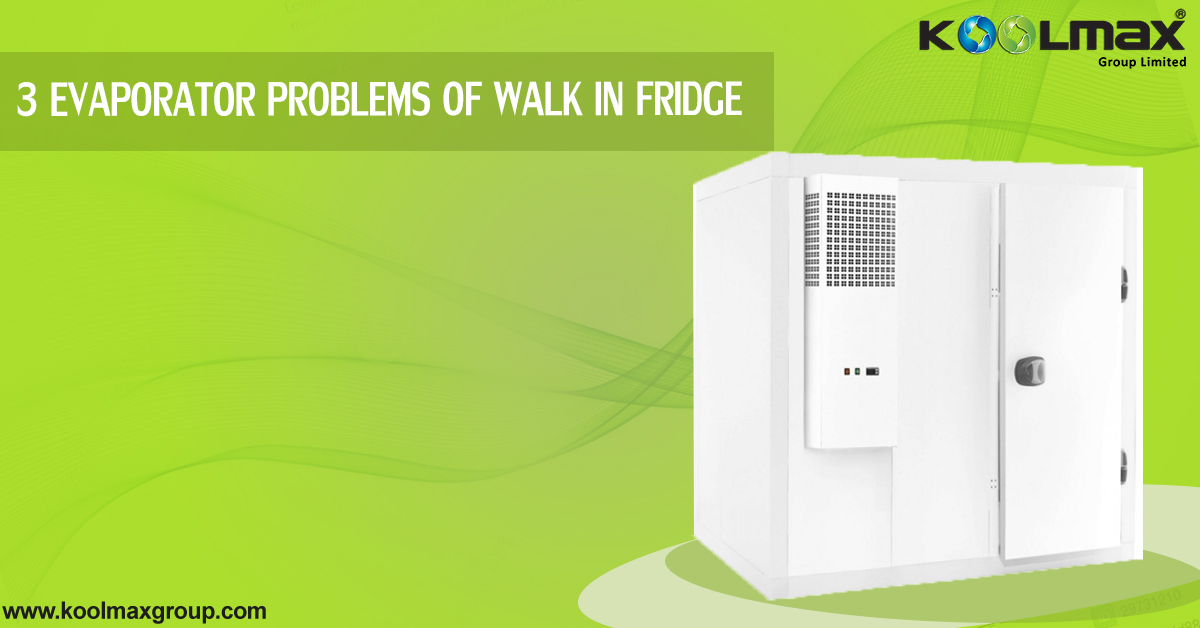Food storage is a significant aspect of survival when it comes to a restaurant and catering business. You have to store fresh meat, vegetables, fruits at optimum temperature conditions for a longer period of time. Here, in this article I will discuss the problems that evaporator can cause to your walk in fridge.
Evaporator Coils
The air moisture freezes on the cooling coils of the walk in fridge from UK, also known as evaporator coils and develops an insulation barricade to heat transfer. Because of the ice buildup, the passage narrows down, which eventually decreases airflow. So, in such scenario, you have to defrost the freezer that will melt ice/frost assembled on the evaporator coils. Afterward, the water from the melted ice will automatically drain out of the freezer.
Ice/frost Buildup
As a matter of fact, it is usual to find freezer evaporators in a condition of poor maintenance. In most of the evaporator units, the frost/ice isn’t melted properly and the water isn’t draining as it should be, which resulted in a block of ice taking over the evaporator. When it comes to the freezing of the coil, the transfer of heat of greatly decreased, which leads to the compressor working tougher and longer. The reason behind that work hard is; when the suction pressure drops, it will make the compressor work at a higher differential pressure, which requires more power. It works longer as the transfer of heat is decreased. When your walk-in-freezer builds up more ice, the compressor will run for longer and you will never maintain the temperature set point of the freezer.
Water Drainage
It’s a common phenomenon that when the ice in the freezer melts, the water should be drained out. But, in some freezers, this doesn’t happen. Do you know what that trapped water can do? It can do structural damage to a walk-in-freezer, particularly the older ones in which cracks enable water to seep in, then freeze and expand. If ice stalagmites and stalactites emerge in your walk in fridge, then you have to take instant action to stay away from costly damage.
Generally the walk-in fridges are divided into the following
- Medium temperature walk-in fridges, which is used for vegetables
- Low temperature walk-in fridges, which is used for meat
- Standalone walk-in fridges, which is used for specific and high value storage
- Centralized walk-in fridges, which is typically used in commercial facilities where they are all connected together (freezers & cold rooms).
Pros
- It has the ability to safely store large amount of food items at a cheaper price for extended periods of time.
- Comes with the complete control of the whole storage operation.
- The insulated floors, built in the fridges help save about 30 per cent of the energy and raise the overall energy efficiency.
- Contains automatic electronic control systems in order to handle and maintain lots of storage facilities.
- The entire equipment can be assembled and disassembled rapidly with the least effort.
- Walk-in fridges are usually built with two systems, if one of the systems fail the backup kicks in and resumes the work.
Cons
- It produces massive amount of heat.
- If a little amount of food is spoiled there is a risk of it affecting everything else.
- Regular checks and maintenance have to be performed
- Only recently the walk-in fridges have updated with eco-friendly devices.
The advantages outweigh the disadvantages and thus, based on the overall factor, the use of a walk-in fridge as commercial freezer room for storing of food and perishable items is highly effective.












